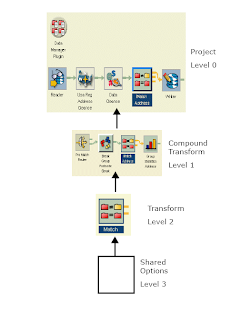今年夏天的第一场大雨不期而至。
这样的天气最适合美美地睡上一觉,或者,听一个优秀的人讲述一段精彩的人生。如果,讲述者又够聪慧美丽,言谈间不时闪过思想的灵动,则更为美妙。这美妙在我见到西门子(中国)有限公司副总裁、税务总监杨雪莲时发生了。那时,窗外笼罩朦胧的雨雾,屋内,有咖啡醇香。
负责西门子中国地区十二个部门、一个控股公司和超过五十五家运营公司所有税务工作的杨雪莲只有三十三岁。如果因为年轻而质疑其能力,那你会发现错得很严 重。迄今为止,杨雪莲的工作单位有三:普华永道会计师事务所、壳牌中国有限公司、西门子中国有限公司。从职场新人到税务总监,她仅用了十年的时间。踏实、 进取、出色的专业能力和优秀的管理能力是她不断获得加分的砝码。
从事务所到公司
其实,杨雪莲的专业和税务并不关联, 1996年大学毕业的她学的是工业外贸。但这并不妨碍她凭借出色的英文成绩和良好的综合素质,成功迈进普华永道的大门。“当时听说国际会计师事务所是不错 的单位,待遇好,环境好。”这无疑是一个刚毕业的大学生所向往的。直到今日,“四大”仍是众多学子们心中理想的工作之一。
刚到普华永道的杨雪莲,就和税务打起了交道。在懵懂中悄悄开启了职业辉煌的大门。“我学到了特别多的东西。”谈到在普华永道的五年,杨雪莲这样形容。 “大到工作态度和待人接物,小到报告中的标点符号和规范用词,从服饰到妆容。”普华永道帮助杨雪莲从刚毕业的大学生一点点过渡到成熟的社会人。“一个规范 的职业培训对每个人都特别重要。”
“学一点,用一点,再学一点。不断学习,也不断进 步。”杨雪莲侧着头,似乎要截取到记忆中某一个片段。事务所要求严格,工作强度大,最重要的就是要“出活”。“工作辛苦,很多时候,真是会哭。但是擦完眼 泪,马上继续干活。”杨雪莲始终抱着公司怎么要求怎么做的原则,甚至有时觉得自己做得不够好。于是进步神速也就不足为奇。第二年,她就和经理直接工作了。 为了更好地达到工作效果,她报名参加CPA考试,然后用两年时间考过。作为一个加班是家常便饭,又不是科班出身的她来说,是值得庆祝和骄傲的。难怪有人开 玩笑说,她天生就是吃这碗饭的。因为,她每年每次都只是用20天的时间来准备考试。然而,在杨雪莲的头脑中,这仅仅表示一件事情做完了,可以放下不用再去 想了。
“那是一段快乐的时光。”她这样定义。
从事务所跳到公司是很多人理想的职业转折,可杨雪莲到壳牌源于偶然,与预谋弹跳毫不相关。
“机会只给有准备的人,我不会刻意去制造机会,但是也不会放过每一个好的机会。”杨雪莲说。当时壳牌的这个职位已经招了很长时间,就到单位已经快要绝望的时候,偶然得知消息的杨雪莲欣欣然来面试。
“如果你现在不出来,以后哪有这么好的机会和职位呢?”杨雪莲至今还清晰记得壳牌老板和她说的这句话。于是,杨雪莲实现了职场上的完美转身,成为壳牌中国有限公司中国区税务经理。
管理:懂得放权鼓励下属
壳牌给了杨雪莲迄今为止最大的变化和挑战。
悠久的公司文化,发达的人事制度,多面化的展示平台,让杨雪莲眼前一亮。从单一向多元转化的价值观;由内向谨慎的性格向外向开朗的变化;由只做好自己的 本职工作向如何联络整合多个部门,带给公司更大的价值转变。杨雪莲的生活和工作向她打开一个又一个窗子,她吸收得如鱼得水。“一年之后,我已经可以和会计 师事务所的两个合伙人一起侃侃而谈。向他们提出我们公司的具体要求,需要注重的情况,以及公司需要事务所进行配合的范围等等。”杨雪莲一语带过那段让她难 忘的时光。
“壳牌是一个异常注重领导力培养的公司。事实上,领导力并不是要求只有领导才 具备,而应该是每个人都应该具备的一种能力。因为每个人都需要一个管理的思想,没有哪一项工作是单独可以完成的,在很多时候,会需要会计部、融资部、人事 部相互配合完成一个项目。这时候,领导力的强弱会直接影响项目的进展。”对于壳牌,杨雪莲有太多感悟。
为了得到更大的发展空间,杨雪莲来到了西门子。和上一个工作有着惊人的相似:公司长时间找不到合适的人选,杨雪莲无意中看到信息,便相约一谈。于公司是“蓦然回首,那人却在灯火阑珊处”,于是杨雪莲无心插柳柳成荫。
这次职位的变化带给她最直接的莫过于管理团队和协调工作成为工作重点。快速融入管理工作,转变工作思路和工作氛围是当务之急。
她负责西门子中国地区十二个部门、一个控股公司和超过五十五家运营公司所有的税务工作,包括税务治理、税务咨询服务和转让定价。这样一个工作范围,杨雪莲自有自己一套方法论,一年之后,公司许多部门不约而同地反映:税务部门的工作面貌变化怎会如此之大?
问及秘笈,杨雪莲淡淡一句:“多给别人机会。”是呀,压力变成动力,效果自然不同。“客户反馈表上可以清楚地反映客户满意度的上升,这也会让员工的热情 增大;我也会及时鼓励,看到一点进步及时鼓励而非不闻不问。”在杨雪莲看来,管理团队,提高士气,要充分体现在对人的关怀上,我是为了你好,为了让你得到 提高,并不是刻意批评你,而是希望给你更大提升的空间。让身边的人能够有这种认识,就离成功不远了。
“同时,我也会和人力资源部门及时沟通,他们有很多巧妙实用的方法,去年在公司的年会上,我们部门采取的是开会和培训灵活结合的方式,在总结成绩展望未 来的同时,还安排适当的游戏形式进行培训,甚至还有人格提升的理论知识。”这样的方式受到部门员工的异常欢迎自然不成疑问。
“一句话,管理工作更多的是要懂得发挥别人的能力。适当放权,但要拥有控制放权的后果。”这时候的杨雪莲,颇有大将风范。
享受做事情的满足感
“不断学习就是我的人生观。”杨雪莲笑着说,“不虚度时光,每一天都对得起自己,并不是看带来多大的利益,也不期望今后能得到多少东西。那么最后的结果就一定会很好。”
无论是考CPA还是ACCA,都是享受完成某一件事情的满足感,哪怕仅仅只有五分钟,也是值得的。“我常常想这就像爬山,在爬的过程中会缺氧,但是想到爬上去能看到的美好景色,就鼓励自己坚持到胜利。”
对于新人,杨雪莲建议说,刚参加工作的年轻人是很难真正清楚自己想要什么的,所以,要仔细聆听和分辨别人的话,然后做一定的方向调整。全盘照搬和充耳不 闻都是不可取的方式。“我的原则是做决定之前要慎重,做决定之后要坚持。因为,如果总是不慎重,之后就很难坚持,那么,就容易养成放弃的习惯。而习惯却是 能决定命运的。
要学会表达,思维和语言是相互促进的。为了准确清晰地表达自己的思想,你 会把语言组织好再说出口;而你经过精心组织的语言,又会反过来促进了你思维的进一步深刻。做财务,表达能力和沟通能力都是必不可少和至关重要的。现在很多 的职场新人应该对此加强重视,一个容易打交道好沟通的人,对工作是大有好处的。
工作中难 免会有压力,存在挑战。这时候,应该有一个积极的态度。“承认挑战有存在价值的,那么你就会积极锻炼自己,通过针对性的锻炼,你的能力得到了提升,紧接着 就会有更大的平台和机会给你。这是一个良性的循环。”套用这个理论,杨雪莲始终让自己处于这样的一种良性循环中。此外,杨雪莲还谈到了她在壳牌学会的一个 让人称道的特质——与人分享。当你与沟通的过程中,会得到某种思想上的认可,那么,你会潜意识地想有更深入的体会,这时候就会更深刻地去领悟。“所以,我 提倡要多多发言,不是为了单纯说而说,而是会思考的说,这对个人是促进,对公司也有益处。”
谈到成功,杨雪莲表示专注加上踏实是重要的因素。
何为关注呢?“不过多设想未来,只想下一步该怎么办已经足够。因为机会什么时候来不知道,机会以什么样子的方式到来也不能控制,所以不要过多考虑将来没有发生的事情,明天的事情少想,做好今天最重要,为将来的机会做好准备。”杨雪莲一口气解释到。
踏实是成功因素的第二条。“不为跳槽而跳槽,如果有一个年薪二百万的工作请你做,要想清楚这二百万需要牺牲什么才能得到,前景能是什么。踏实做好目前工作最重要。每一个工作都是未来的积累。踏实工作,心里踏实。当然,谦虚、多请教也是不变信条。”
肌肉休息论
微笑的杨雪莲始终抱着感恩的心在生活,十余年的职场生涯一定会有不尽如人意的时候,但她记录下的都是美好。就像白纸上滴上墨点,她并不会因为墨点而怨天 尤人,相反,她会通过自己的努力将白纸化成一片繁花似锦,将墨点变成花蕊,微笑着面对生活,而生活这面镜子反馈给她的自然会是更灿烂的笑脸。
将来呢?说到这个话题,杨雪莲笑言自己是一个不大会设置长远计划的人,目前生活的重点是锻炼身体。“那种今天瑜伽,明天跳操的运动方式不大适合我。我希 望自己认真坚持每一个时间段的锻炼,然后每一个投入都能变成产出。所以,我请一个健身教练,每次坚持一小时器械,一小时跑步。运用科学的方法,合理的饮 食,为了达到一个良好的效果。”接着,她半开玩笑地说“为了减脂”的时候,有小女孩的可爱神情。
工作热情是以身体为基础,身体是革命的本钱嘛。而健身,是需要毅力来完成的事情。“工作和生活应该有机结合。”在杨雪莲看来,窝家看电视是被动休息,读书运动是主动休息,而后者更有益于身体。
杨雪莲是一个善于发现和总结的有心人。拿锻炼身体来说,虽说时间不长,但她有了一套自己的“肌肉休息论”。训练中有一个简单的侧腰运动,向左侧腰拉伸 时,是休息右侧腰,反之亦然。整个生活工作就像一个身体,读书和旅游都是运动着的肱二头肌,这时候,得到休息的肱三头肌就是工作。工作和生活相得益彰,这 是杨雪莲心中的理想模式。工作要做好,但也要有个度,二八定律是完美的。
除了健身,旅游 也是杨雪莲喜欢的。“到一个陌生的城市,我会尽量发现和挖掘它美好的一面。因为兴高采烈地去一个地方,希望能心满意足地回来;而且,每一个地方都有美丽的 一面,如果你到了上海抱怨听不懂当地话,到了日本又对人多车多皱眉头,旅游的快乐就会大打折扣。”现在的杨雪莲更倾向于自助游,到喜欢的城镇、山水随心逛 逛,停停走走的时间和兴趣全由自己掌握,更放松也更多快乐。同时,也满足了杨雪莲另一个小小的特殊爱好——喜欢逛一逛当地的菜市场。看看新鲜的蔬菜水果还 有一些当地的特色蔬菜,是一件很开心的事情。“觉得生活真美好!”
与杨雪莲告别时候,天空依然用大雨述说着心情,而她撑着的雨伞像一道别样的彩虹淡出视线。渐行渐远之后,还禁不住地想:这个喜欢不同阶段看不同类型书 籍的美丽女子,从荣格到毛姆到村上春树,不知道过段时间会看什么呢?但是,无论是生活的书籍还是职场的成绩,相信她总是会交一份让人满意的答案。






